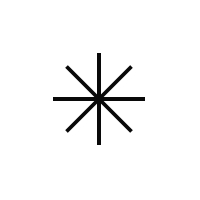Why Real-Time Token Tracking Feels Like the Wild West — and How to Tame It
So I was scrollin’ through my usual crypto feeds the other day, and something felt off about how traders kept missing key moves. It’s like everyone’s got the numbers but no clue when to jump in. Wow! That’s gotta be frustrating, right? In DeFi, timing is everything. The whole scene spins on razor-thin margins and split-second decisions. But here’s the kicker: the tools we use for tracking token prices and analyzing trading pairs? They often lag or drown you in noise. Not very helpful.
Honestly, I’ve been down that rabbit hole myself, hunting for reliable, real-time DEX analytics tools. Initially I thought, “Hey, maybe the big platforms have this covered.” But then realized that many of them just scrape data from a few sources and call it a day. It’s like trying to catch lightning with a butterfly net. There’s gotta be a smarter way to slice through the chaos and get the actual pulse of the market.
On one hand, decentralized exchanges (DEXs) offer incredible transparency—every trade is on-chain, all public. Though actually, pulling actionable insights from that flood of raw data isn’t straightforward. You need something that not only tracks token prices but also analyzes trading pairs dynamically, spotting unusual volume shifts, potential rug pulls, or emerging trends before they explode. Hmm… that’s easier said than done.
One tool that’s been quietly making waves for me is Dexscreener. Seriously? Yes! It’s kinda like having a radar tuned specifically for DeFi trades, hunting for those juicy tokens that are heating up. Check this out—there’s a handy app and site that tracks live token prices, charts trading pairs, and even flags suspicious activity.
Okay, so check this out—if you want to see what I mean, you can explore it here. It’s not perfect, but it’s miles ahead of the usual suspects.

Now, I’ll be honest—the DeFi space is a bit like the Wild West out here. Tokens pop up overnight. Liquidity pools fluctuate wildly. And sometimes, it feels like the market’s just playing tricks on you. So having a tool that updates in real-time and doesn’t miss those subtle shifts can save you from big headaches. But beyond just prices, understanding trading pairs analysis is key. For example, some pairs might show volume spikes that don’t match price movement, hinting at potential manipulation or early insider action.
My instinct said that watching just the price candles isn’t enough. You’ve gotta peek under the hood—volume, liquidity depth, pool composition. Initially, I ignored some of these metrics because they seemed too technical, but actually, they’re goldmines for spotting early signals. Not to mention, some sneaky projects try to hide their tracks by swapping through obscure pairs.
Here’s the thing. Many traders focus solely on top tokens or big market caps, but the real magic often happens in low-cap pairs right before they moon. That’s where dynamic analytics come in. Dexscreener’s monitoring helps uncover those gems by analyzing pairs across multiple chains in real-time. That cross-chain perspective is pretty crucial these days, given how fragmented liquidity has become.
And oh, by the way, there’s a subtlety in DEX analytics that bugs me. Most platforms don’t factor in transaction slippage or gas fees when showing token price moves, which can be very misleading. You might see a token “pumping” on charts, but after fees and slippage? The gains are often much smaller or even negative. So a tool that integrates these elements offers a clearer picture of real profitability.
Honestly, I’m not 100% sure how well all this scales as more chains come online, but right now, tools like Dexscreener help cut through the noise remarkably well. Plus, their UI is surprisingly user-friendly for something so data-heavy.
Why Trading Pairs Analysis Is a Game Changer
Digging deeper, trading pairs analysis is kinda the secret sauce behind savvy DeFi investing. You see, tokens don’t move in isolation. Their pairs—say, with ETH or stablecoins—tell a richer story. For example, a sudden surge in a token’s pair with USDT might suggest fresh buying interest from retail, while a spike in the same token paired with a less liquid coin might be a whale’s playground.
Initially, I thought volume was the only variable that mattered. But actually, tracking the ratio changes between pairs can reveal arbitrage opportunities or early warnings of liquidity draining. Plus, some pairs get locked on certain DEXs but not others, which can impact price stability. That complexity is what makes real-time pair analytics so valuable.
Here’s a quick example from my own trades: I noticed a token’s price was steady on Uniswap but suddenly dropping on a smaller DEX. My first thought was maybe a bug, but then I realized a whale was offloading tokens quietly on the smaller platform, triggering a local price dip. Catching that early let me adjust my position before the wider market caught on.
Seriously, without that kind of paired insight, you’re basically flying blind. And considering how fast DeFi moves, having a tool that continuously scans pairs and alerts you to anomalies is very very important.
So yeah, while no system is foolproof (and I’ve been burned plenty of times chasing pumps), combining real-time token tracking with deep trading pairs analysis is the closest thing we have to a competitive edge. If you want to dive into this tech, the platform I mentioned earlier offers a solid starting point—take a look here.
Anyway, that’s my two cents on taming the chaos of DeFi token tracking. It’s messy, unpredictable, but with the right tools and a bit of gut intuition, you can turn the tide in your favor. Just remember, no tool replaces doing your own homework and staying sharp on market signals. And hey, sometimes the market throws curveballs that no screener can predict…













